Hardware Mechanism for Energy Saving in WiFi Access Points
Abstract
1. Introduction
1.1. Related Work: Energy Saving in Wireless Fidelity (WiFi) Access Points (APs)
1.2. Main Contribution
- A formal model that shows that if the discharge period is larger than the charge period then our Mechanism will achieve energy saving. That parametric model is useful to adapt the implementation of our Mechanism to any WiFi AP taking into account its particular conditions.
- The implementation of our electronic control circuit for controlling the supply of a WiFi AP from a PSE supply or our external battery. The implementation of the control circuit is guided by our formal model. We present a general schematic of an easy to implement electronic circuit based on ordinary components. The need of that hardware is to control the charge and discharge periods in a simple way complementing other existing software or firmware techniques.
- The realization of a number of experimental tests for verifying the formal model and the implementation of our hardware mechanism. Those experimental tests reveal that it is possible to save energy with our mechanism. The projection of results for a number of hours shows that a considerable amount of energy could be saved.
2. The Mechanism for Energy Saving in WiFi AP
2.1. Mathematical Model Analysis
2.2. Hardware Implementation of the Mechanism
3. Experimental Results: Testing our Mechanism
- Analysis of the Tc using our mechanism: the objective was to analyze the behavior of the battery charging current and voltage when the supply S energized the Ruckus AP and the battery simultaneously. We observed the behavior of Ic, Vc, Ia and Va.
- Analysis of the Td using our mechanism: the objective was to analyze if the Ruckus AP could work being energized by B and to determine Td. We observed the behavior of Id and Vd.
3.1. Power Consumption in Tc
- V (volt): black cable tip (-) of volt was connected to the Aadt and the red cable tip of Volt (+) to the CU. Finally, the volt measured 46.4 V.
- I (amp): orange cable was intercepted by amp connecting first its black cable tip (-) to the PoE output and the red cable tip (+) to the CU. Finally, the amp measured 0.05 A.
- Vc (volt): black cable tip (-) of volt was connected to the Aadt and the red cable tip of volt (+) to positive terminal of B. The Vc shown in the figure corresponds to 98.6% of the total voltage charged, the volt measured 14.1 V.
- Ic (amp): black cable tip (-) of volt was connected to a yellow cable connected to the CU and the red cable tip of Volt (+) to a yellow cable connected to the positive terminal of B. The Ic shown in the figure corresponded to 98.6% of the total voltage charged, the amp measured 0.16 A.
3.2. Power Consumption in Td
- Vd (volt): black cable tip (-) of volt was connected to the Aadt and the red cable tip of volt (+) to positive terminal of B. Finally, when the Vd had reached 84.5% (OBTx-1) and 88.9% (OBTx-2) the volt measured 12.1 V (OBTx-1) and 11.9 V (OBTx-2).
- Id (amp): black cable tip (-) of volt was connected to a yellow cable connected to the CU and the red cable tip of volt (+) to a yellow cable connected to the positive terminal of B. Finally, when the Vd had reached 84.5% (OBTx-1) and 88.9% (OBTx-2) the amp measured 0.16 A (OBTx-1 and OBTx-2).
4. Discussion
- The vacuum voltage should be as high as posible. This allows to augment the slope of Ic during Te. Which means that a constant Ic will be obtained earliest. In this way we enfoster the shortening of Tc.
- Starting the discharge period, the Vd must be as high as possible and the slope of Id be as small as possible. This enfoster to extend Td.
- In both previous cases, if the WiFi AP works very little, we enfoster the shortening of Tc and extension of Td.
5. Conclusions
- To add clean and free energy supply to the system in order to help charging the battery in conjunction with the standard energy supply like power over ethernet (used in this paper) or another, modification of the adapters and power router will be needed.
- To study the influence of the activity of the WiFi AP transmitting user data, we did some initial tests considering low constant bit rate traffic in the WiFi AP and obtained also energy saving. Those tests must be reinforced in order to infer good conclusions. Moreover, it is difficult to design a formal model that could explain the realistic conditions for obtaining energy saving. In addition, if the AP is active (transmitting user data) most of the time, careful study will be necessary to analyze the possible packet loss during the transition between the discharge and charge cycles.
- To determine the influence of the wireless fidelity channel in energy saving. In dense wireless fidelity networks there are a lot of interferences among APs, and the number of wireless fidelity terminals is very high. Usually the APs change of channel producing more energy consumption. Formalizing realistic conditions for energy saving is very hard and the changing of our power routing will be also needed.
- The constant charging and discharging of the battery over a long amount of time (2 or more years) causes its capacity to be reduced considerably or even makes it cease working. This could complicate the charge period being shorter than the discharge period for achieving energy saving (after that long amount of time). Properly selecting and planning a battery replacement to minimize this effect is a key factor. On the other hand, the energy-saving model must be extended to introduce this correctly.
Author Contributions
Acknowledgments
Conflicts of Interest
References
- Ferro, E.; Potortì, F. Bluetooth and wi-fi wireless protocols: A survey and a comparison. IEEE Wirel. Commun. 2005, 12, 12–26. [Google Scholar] [CrossRef]
- Teixidó, P.; Gómez-Galán, J.A.; Gómez-Bravo, F.; Sánchez-Rodríguez, T.; Alcina, J.; Aponte, J. Low-Power Low-Cost Wireless Flood Sensor for Smart Home Systems. Sensors 2018, 18, 3817. [Google Scholar] [CrossRef] [PubMed]
- El Jaouhari, S.; Palacios-Garcia, E.J.; Anvari-Moghaddam, A.; Bouabdallah, A. Integrated Management of Energy, Wellbeing and Health in the Next Generation of Smart Homes. Sensors 2019, 19, 481. [Google Scholar] [CrossRef]
- Yovanov, G.; Hasapis, G. An Architectural Framework and Enabling Wireless Technologies for Digital Cities & Intelligent Urban Environments. Wireless Pers. Commun. 2009, 49, 445–463. [Google Scholar] [CrossRef]
- Ain, Q.-U.; Iqbal, S.; Khan, S.A.; Malik, A.W.; Ahmad, I.; Javaid, N. IoT Operating System Based Fuzzy Inference System for Home Energy Management System in Smart Buildings. Sensors 2018, 18, 2802. [Google Scholar] [CrossRef] [PubMed]
- Palacios, R.; Alonso, J.; Fonseca, N.; Granelli, F. Maximum Achievable Energy Efficiency of TXOP Power Save Mode in IEEE 802.11ac WLANs. In Proceedings of the 2016 IEEE Global Communications Conference (GLOBECOM), Washington, DC, USA, 4–8 December 2016. [Google Scholar] [CrossRef]
- Lee, I. Interference-Aware Opportunistic Dynamic Energy Saving Mechanism for Wi-Fi Enabled IoTs. Future Internet 2017, 9, 38. [Google Scholar] [CrossRef]
- Viciana, E.; Alcayde, A.; Montoya, F.G.; Baños, R.; Arrabal-Campos, F.M.; Manzano-Agugliaro, F. An Open Hardware Design for Internet of Things Power Quality and Energy Saving Solutions. Sensors 2019, 19, 627. [Google Scholar] [CrossRef]
- Lee, J.; Lee, J. Prediction-Based Energy Saving Mechanism in 3GPP NB-IoT Networks. Sensors 2017, 17, 2008. [Google Scholar] [CrossRef]
- Xu, C.; Zhang, P. Open-Source Software and Hardware Platforms for Building Backscatter Systems. Getmobile Mob. Comput. Commun. 2019, 23, 16–20. [Google Scholar] [CrossRef]
- Jin, M.; Jung, J.-Y.; Lee, J.-R. Dynamic Power-Saving Method for Wi-Fi Direct Based IoT Networks Considering Variable-Bit-Rate Video Traffic. Sensors 2016, 16, 1680. [Google Scholar] [CrossRef]
- Höyhtyä, M.; Apilo, O.; Lasanen, M. Review of Latest Advances in 3GPP Standardization: D2D Communication in 5G Systems and Its Energy Consumption Models. Future Internet 2018, 10, 3. [Google Scholar] [CrossRef]
- Tirronen, T.; Larmo, A.; Susitaival, R.; Rune, J. Apparatus and method for providing power saving during idle to connected mode transitions. U.S. Patent Application 14/784, 12 June 2018. Ericsson, Estocolmo, Suecia. [Google Scholar]
- Mehmood, Y.; Zhang, L.; Förster, A. Power Consumption Modeling of Discontinuous Reception for Cellular Machine Type Communications. Sensors 2019, 19, 617. [Google Scholar] [CrossRef] [PubMed]
- Liang, R.; Zhong, Y.; Xia, Q. Energy-Saved Data Transfer Model for Mobile Devices in Cloudlet Computing Environment. In Proceedings of the 3rd IEEE International Conference on Cloud Computing and Big Data Analysis (ICCCBDA 2018), Chengdu, China, 20–22 April 2018. [Google Scholar]
- Nurchis, M.; Bellalta, B. Target Wake Time: Scheduled access in IEEE 802.11ax WLANs. Cornell University Library. arXiv 2018, arXiv:1804.07717. [Google Scholar]
- Overcomm, Wi-Fi with 802.11ax means unprecedented capacity and better efficiency. Available online: https://www.qualcomm.com/solutions/networking/features/80211ax (accessed on 1 February 2018).
- Cisco White Paper: Network Architecture Cisco DNA: Cisco Integrated Services Router: Reduce Power Consumption through Integrated Services Delivery. Enero 30 2018. Available online: https://www.cisco.com/c/en/us/solutions/collateral/enterprise-networks/branch/net_implementation_white_paper0900aecd80716af6.html (accessed on 3 November 2018).
- Hellewt Packard Enterprise. HPE Aruba OS-Switch Power Over Ethernet (PoE/PoE+): Planning and Implementation Guide. November Part Number: 5200-1195a. Available online: http://h20628.www2.hp.com/km-ext/kmcsdirect/emr_na-c04344559-9.pdf (accessed on 3 November 2018).
- Microsemi Next Generation PoE: IEEE802.3bt White Paper Revision 1.0. Available online: https://www.microsemi.com/document-portal/doc_download/136209-next-generation-poe-ieee-802-3bt-white-paper (accessed on 20 March 2017).
- Zhou, B.; Zhang, F.; Wang, L.; Hou, C.; Fernández, A.; Vasilakos, A.; Wang, Y.; Wu, J.; Liu, Z. HDEER: A distributed routing scheme for energy efficient networking. IEEE J. Sel. Area Commun. 2016, 34, 1713–1727. [Google Scholar] [CrossRef]
- International Telecommunication Union, “ICTs and Energy Efficiency” 2017. Available online: http://www.itu.int/en/action/climate/Pages/energy_efficiency.aspx (accessed on 14 July 2018).
- Dahal, M.S.; Shrestha, J.N.; Shakya, S.R. Energy saving technique and measurement in green wireless communication. Energy 2018, 159, 21–31. [Google Scholar] [CrossRef]
- Andrade, S.; Ruiz, E.; Granell, E.; Lloret, J. Energy Consumption of Wireless Network Acces Point. In Green Communication and Networking, Proceedings of the 2nd International Conference, GreeNets 2012, Gandia, Spain, 25–26 October 2012; Springer: Berlin/Heidelberg, Germany, 2012; pp. 81–91. [Google Scholar] [CrossRef]
- Tang, S.; Obana, S. Energy Efficient Downlink Transmission in Wireless LANs by Using Low-Power Wake-Up Radio. Wirel. Commun. Mob. Comput. 2017, 2017, 1–12. [Google Scholar] [CrossRef]
- Wan, L.; Kang, S. POEM: Minimizing Energy Consumption for WiFi tethering Service. IEEE/ACM Trans. Netw. 2016, 24, 3785–3797. [Google Scholar] [CrossRef]
- Hu, H.; Guo, J.; Zhang, H.; Wang, F. Joint Optimization of Sensing and Power Allocation in Energy-Harvesting Cognitive Radio Networks. ACM Trans. Embed. Comput. Syst. 2017, 17, 1–21. [Google Scholar] [CrossRef]
- Yu, H.; Xu, C.; Liang, W. Green-Energy-Powered Cognitive Radio Networks. ACM Trans. Embed. Comput. Syst. 2017, 17, 1–18. [Google Scholar]
- Chen, W.; Li, Z.; Biao, J. Huawei Technologies, Shenzhen, CN. Access Point Energy Saving Method and Access Point. U.S. Patent Application 15/670,716, 8 February 2018. [Google Scholar]
- Marrero, D.; Macías, E.; Suárez, Á.; Santana, J.; Mena, V. A Method for Power Saving in Dense WiFi Networks Interference. Mobile Netw. Appl. 2019, 24, 688–699. [Google Scholar] [CrossRef]
- Wägemann, P.; Distler, T.; Janker, H.; Raffeck, P.; Sieh, V.; Schröder-Preikschat, W. Operating Energy-Neutral Real-Time Systems. ACM Trans. Embed. Comput. Syst. 2017, 17, 1–25. [Google Scholar] [CrossRef]
- Porsch, M.; Bauschert, T. Aligned Beacon Transmissions to Increases IEEE 802.11s Light Sleep Mode Scalability. In Proceedings of the 20th EUNICE/IFIP EG 6.2, 6.6 International Workshops on Advances in Communication Netwoking, Rennes, France, 1–5 September 2014. [Google Scholar]
- Lozano, C.; Camelo, M.; Vila, P.; Donoso, Y. A Multi-objective Routing Algorithm for Wireless Mesh Network in a Smart Cities Environments. J. Netw. 2015, 10, 60–69. [Google Scholar] [CrossRef]
- Song, Y.; Ciubutaru, B.; Muntean, G. A Slow-sTart Exponential and lineal Algorithm for energy saving in Wireless Networks. In Proceedings of the IEEE International Symposium on Broadband Multimedia Systems and Broadcasting (BMSB), Nuremberg, Germany, 8–10 June 2011. [Google Scholar]
- Santana, J.; Marrero, D.; Macías, E.; Mena, V.; Suárez, Á. Interference Effects Redress over Power-Efficient Wireless-Friendly Mesh Networks for Ubiquitous Sensor Communications across Smart Cities. Sensors 2017, 17, 1678. [Google Scholar] [CrossRef] [PubMed]
- Zou, H.; Zhou, Y.; Jiang, H.; Chien, S.-C.; Xie, L.; Spanos, C.J. WinLight: A WiFi-based occupancy-driven lighting control system for smart building. Energy Build. 2018, 158, 924–938. [Google Scholar] [CrossRef]
- Musleh, A.; Debouza, M.; Farook, M. Design and Implementation of Smart Plug: An Internet of Things (IoT) Approach. In Proceedings of the International Conference on Electrical and Computing Technologies and Applications (ICECTA), Ras Al Khaimah, UAE, 21–23 November 2017. [Google Scholar]
- Arduino, Arduino uno Rev 3. Available online: https://store.arduino.cc/usa/arduino-uno-rev3 (accessed on 25 January 2019).
- Texas Instruments Incorporated, LM2576xx Series simple switcher® 3-A Step-Down Voltage Regulator. snvs107d—June 1999—revised May 2016. Available online: http://www.ti.com/lit/ds/symlink/lm2576.pdf (accessed on 25 January 2019).
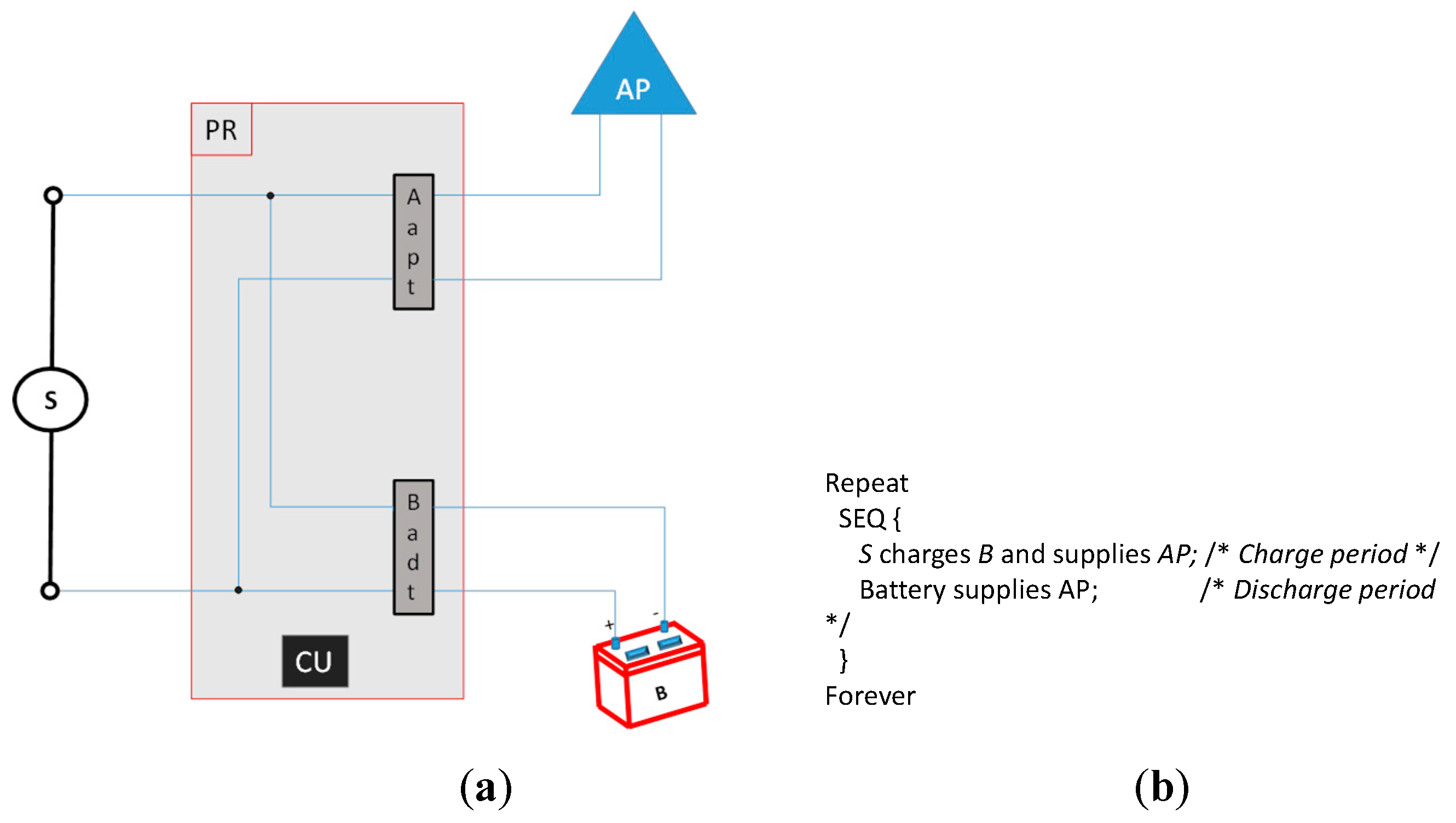
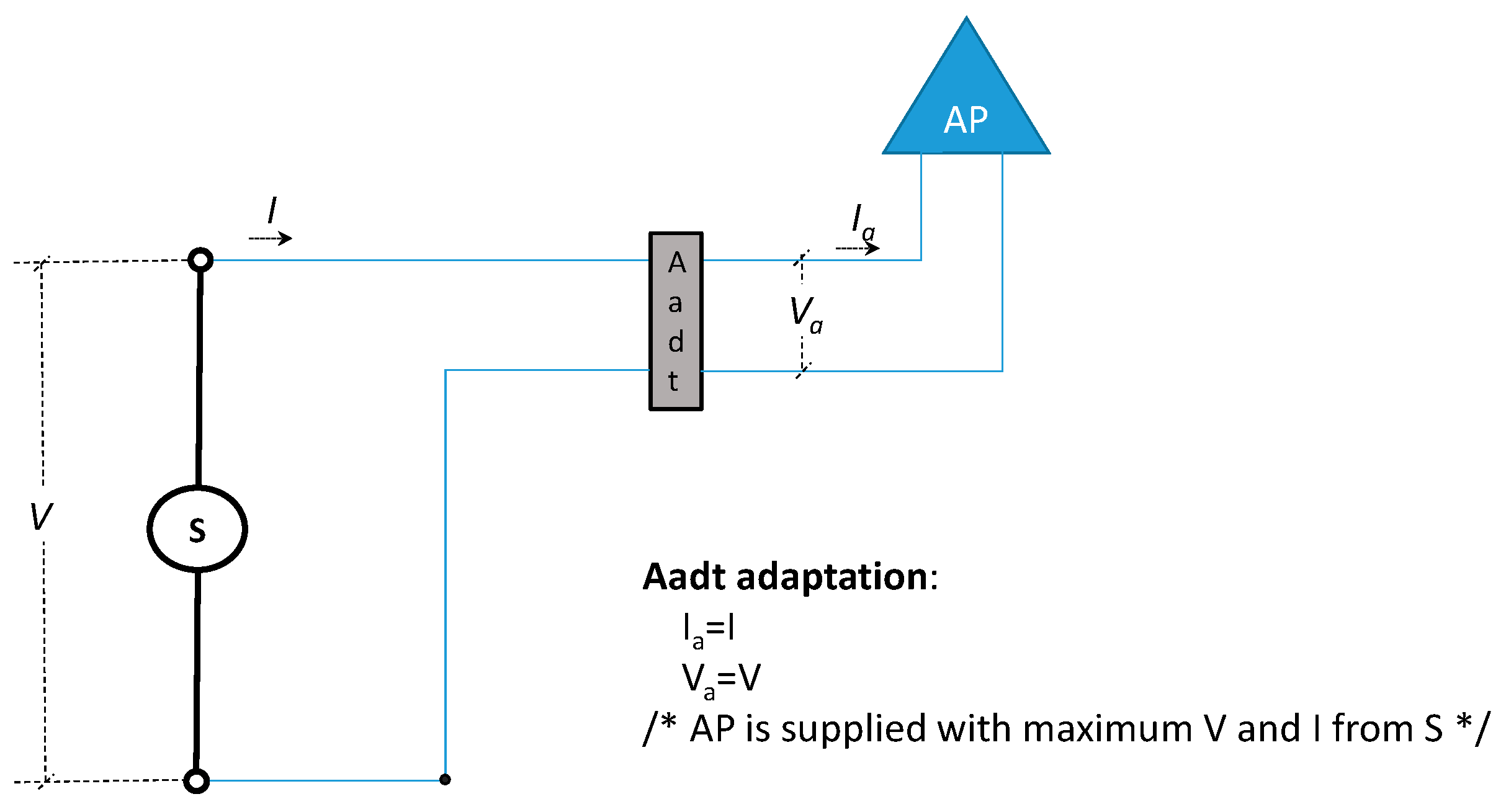
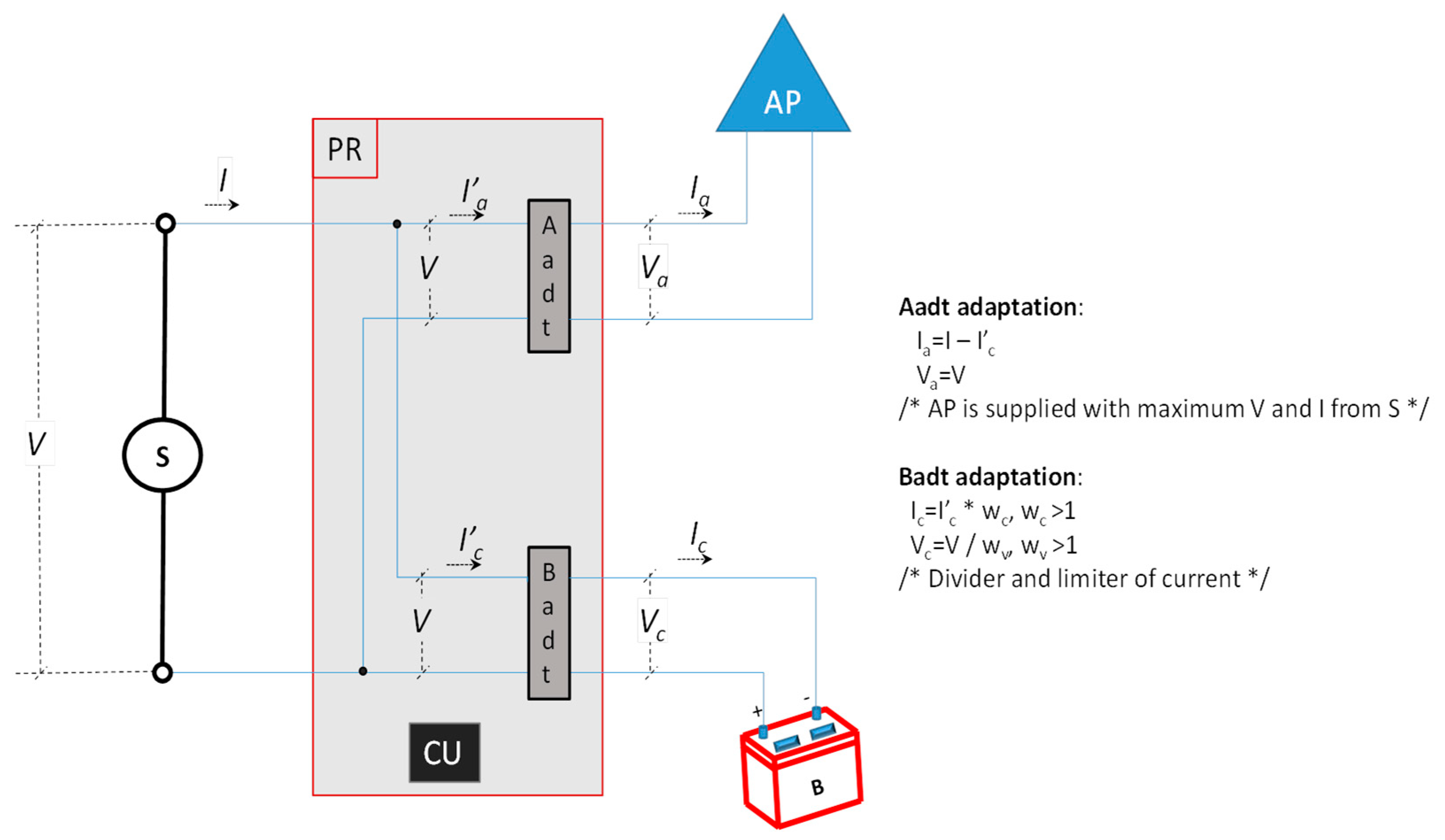
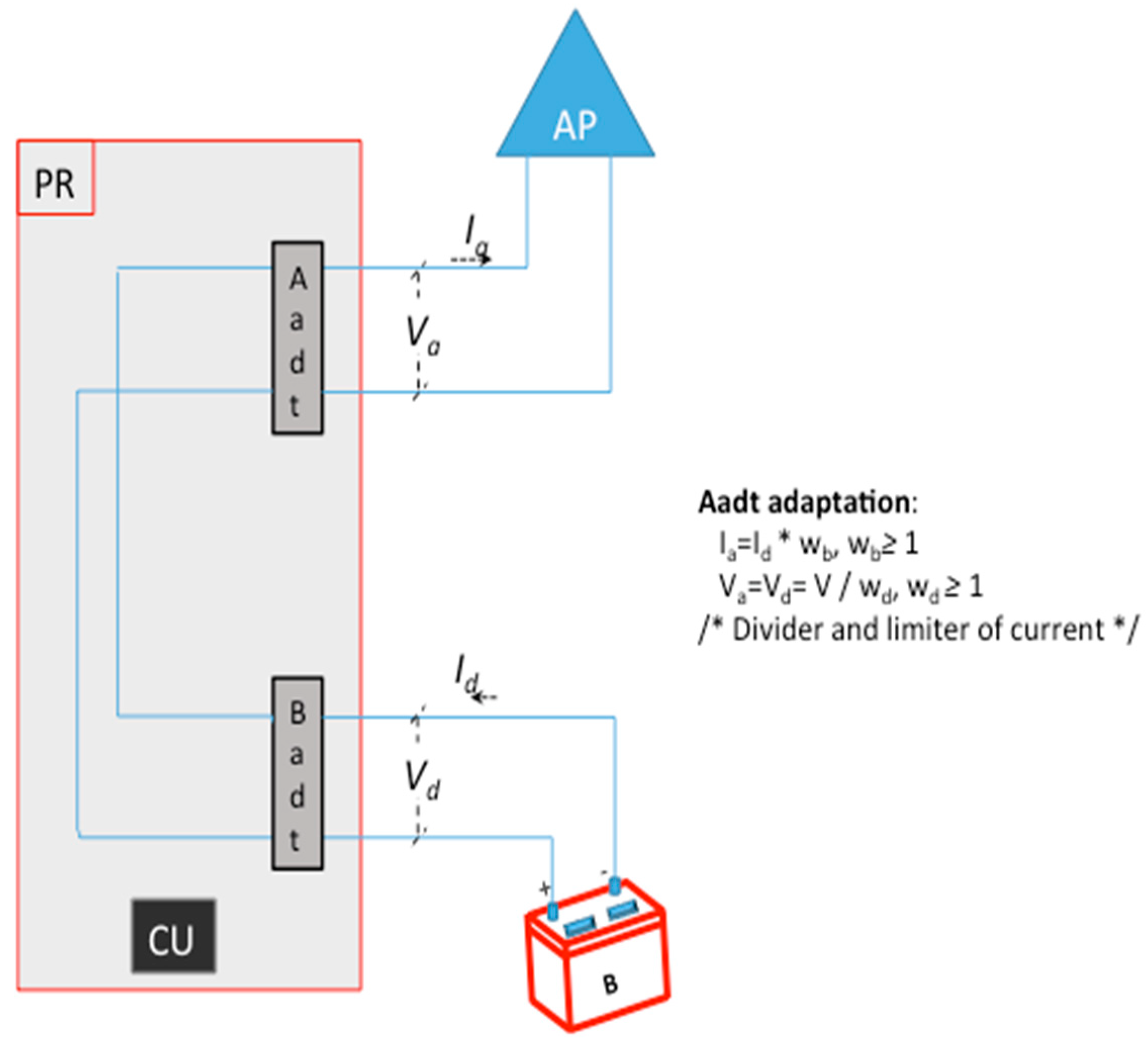
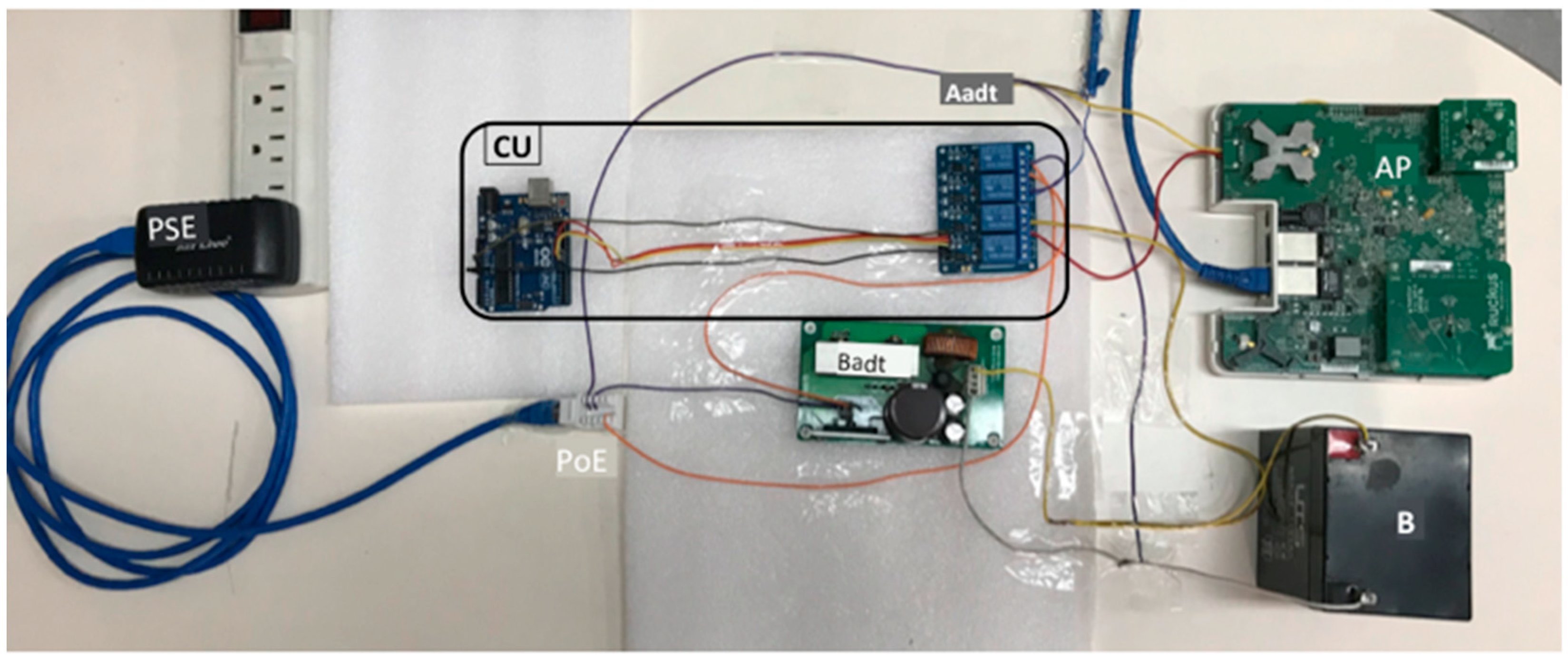
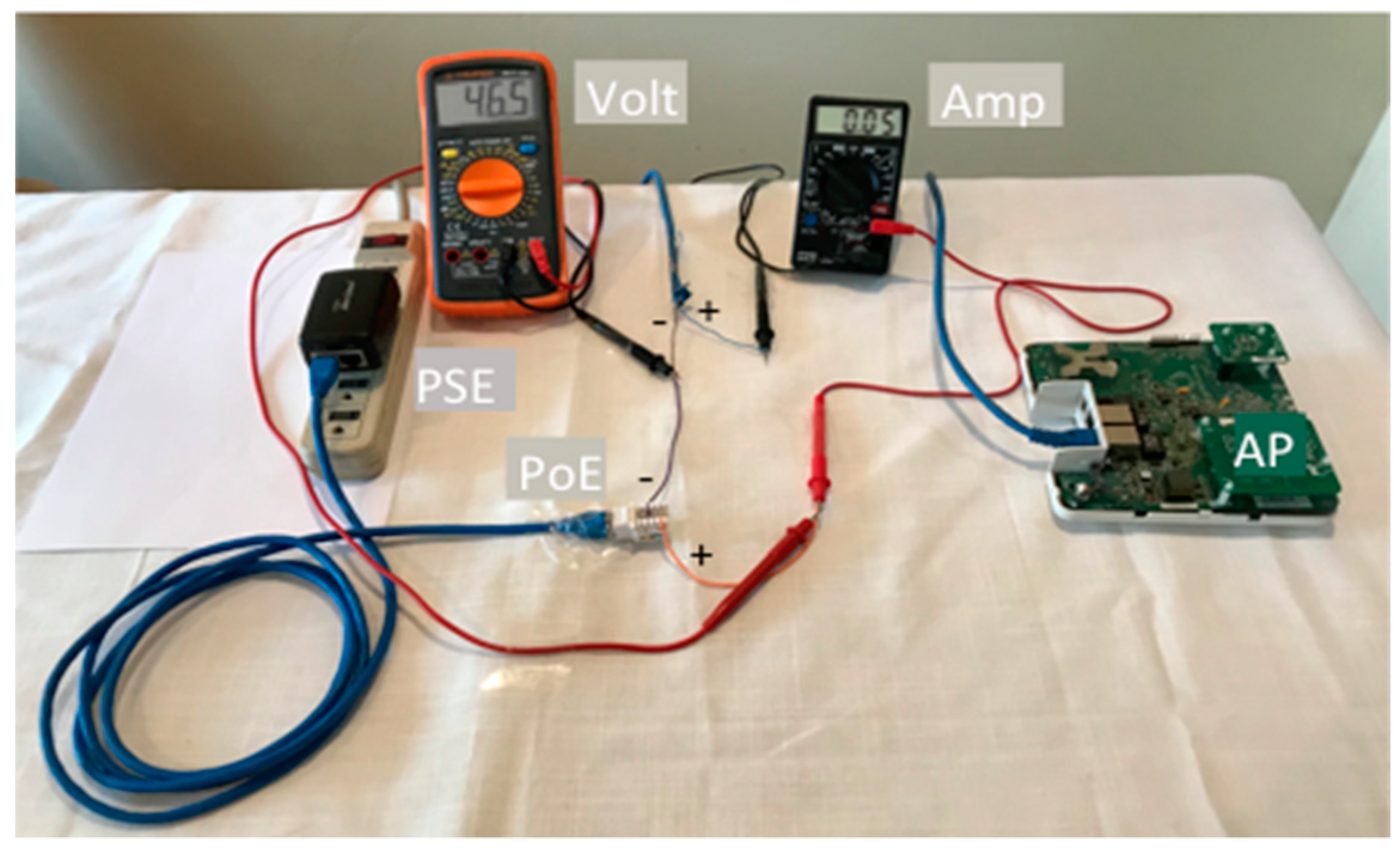
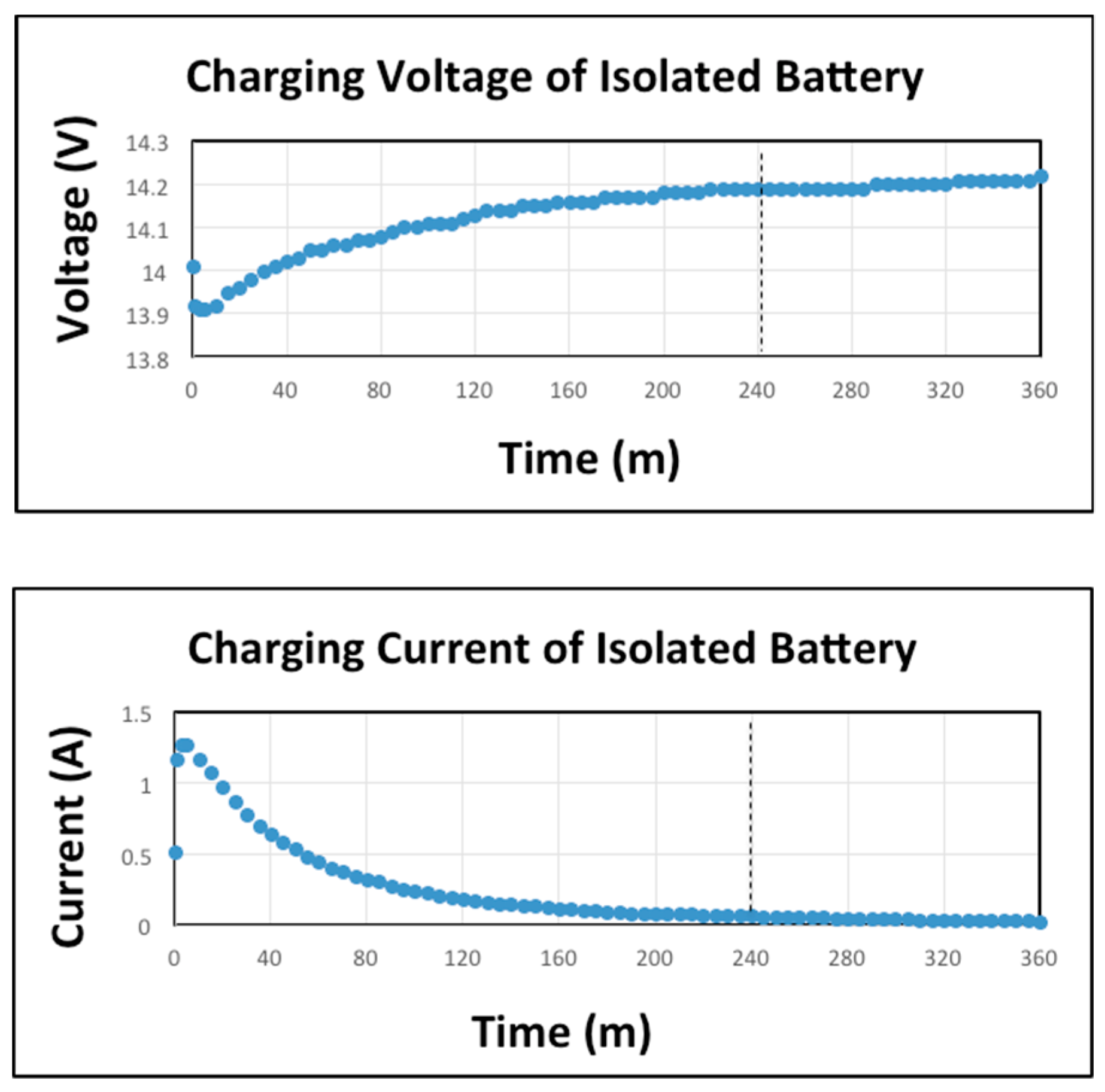
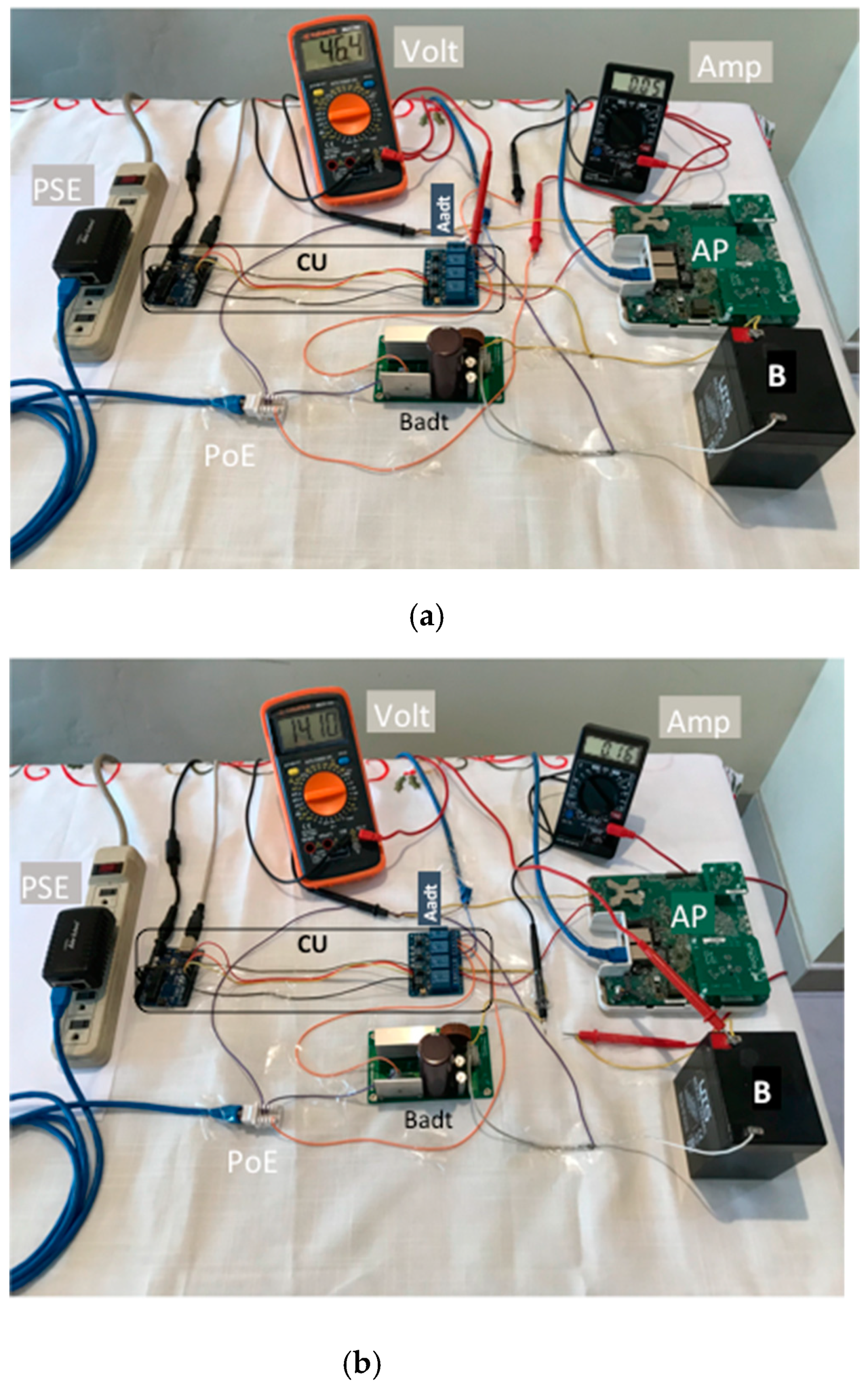
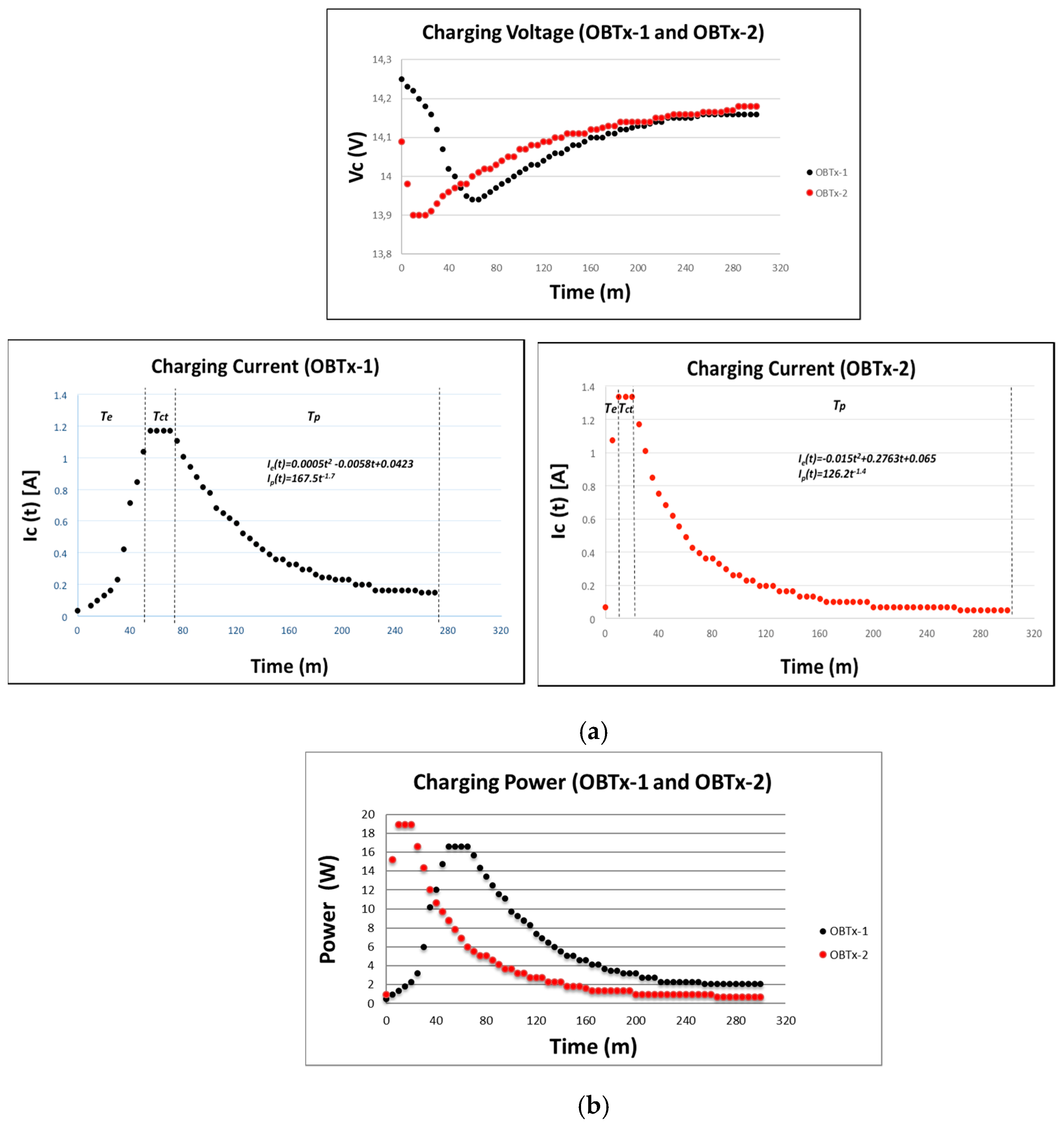
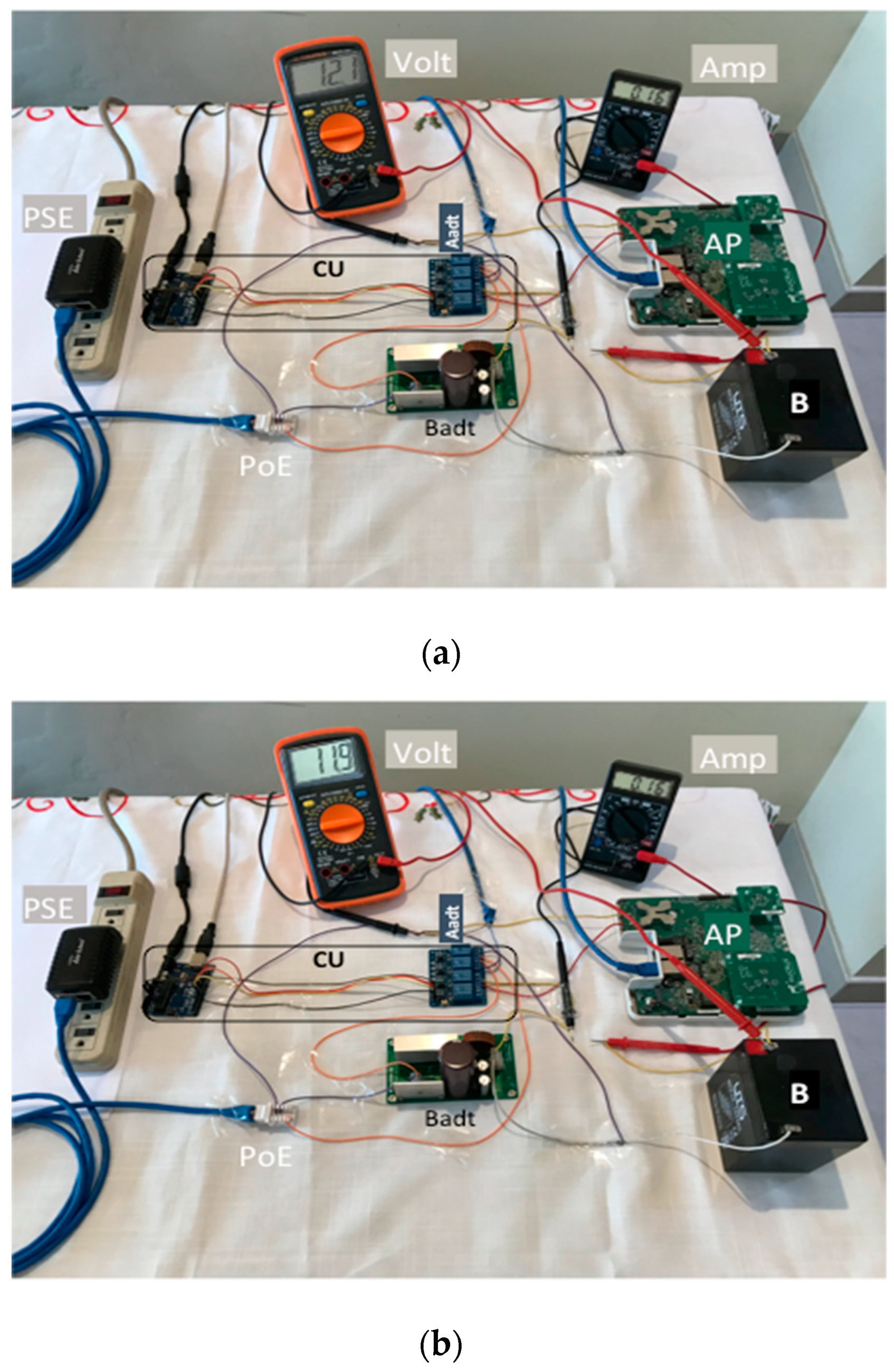
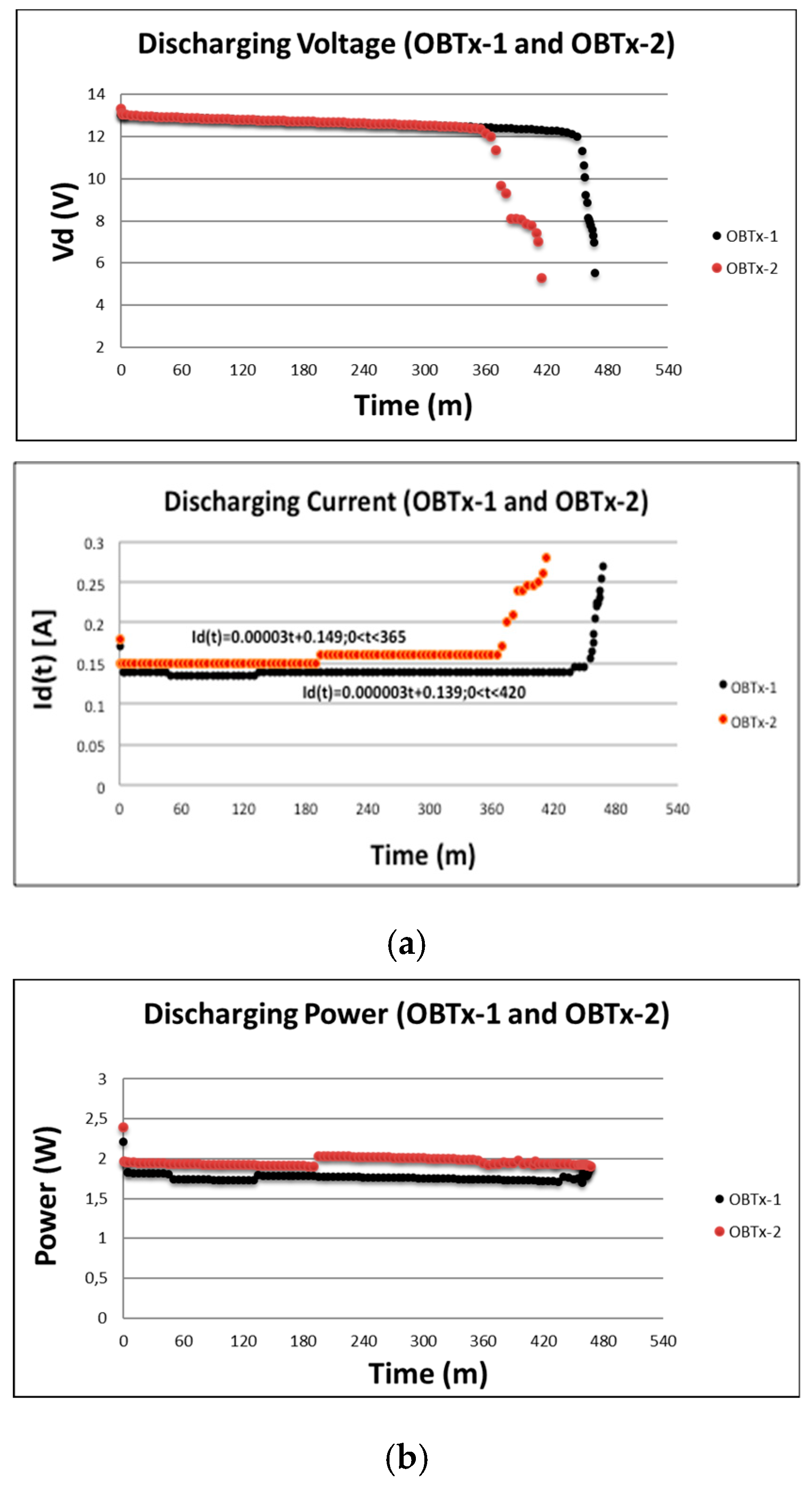
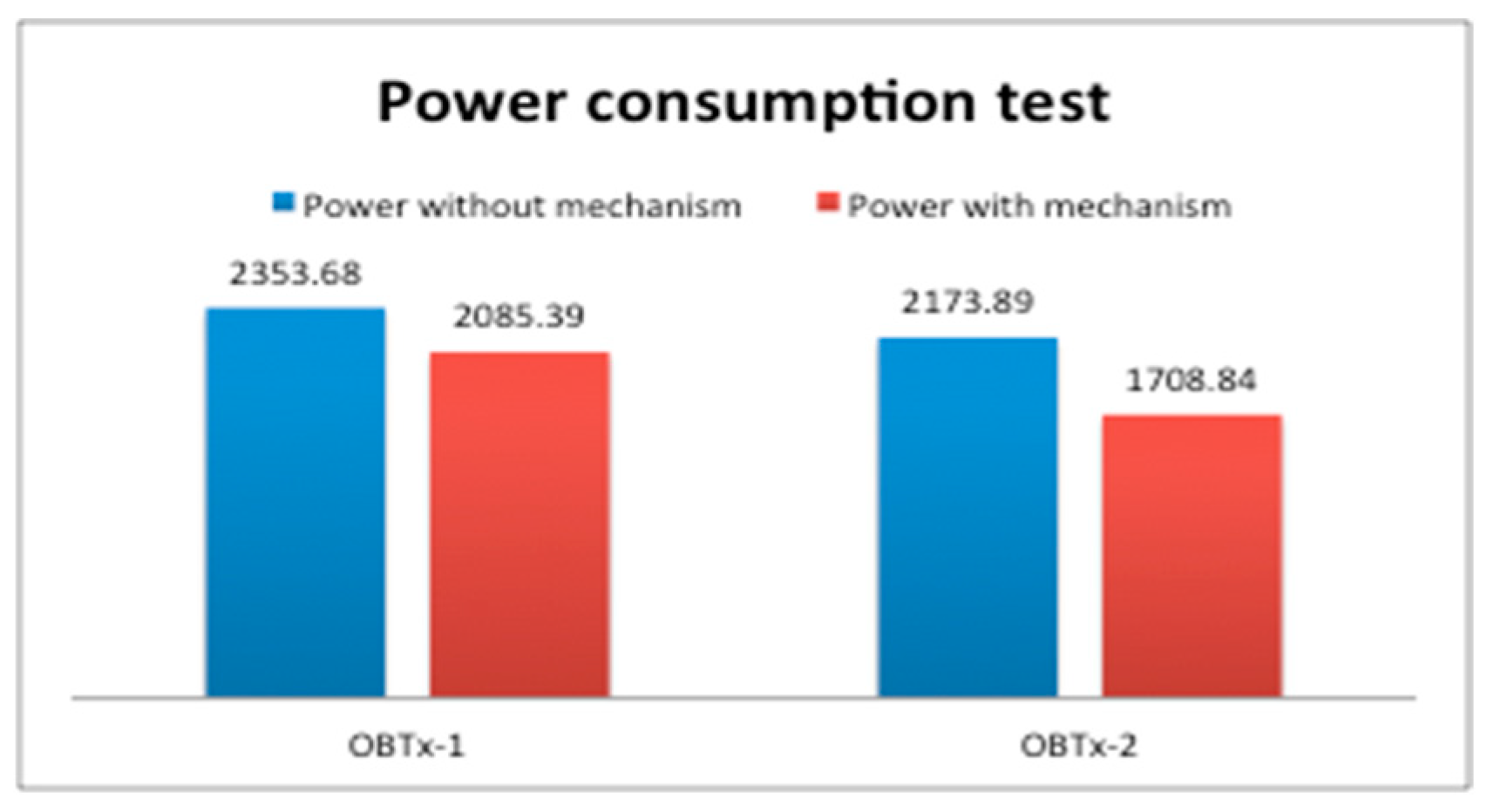
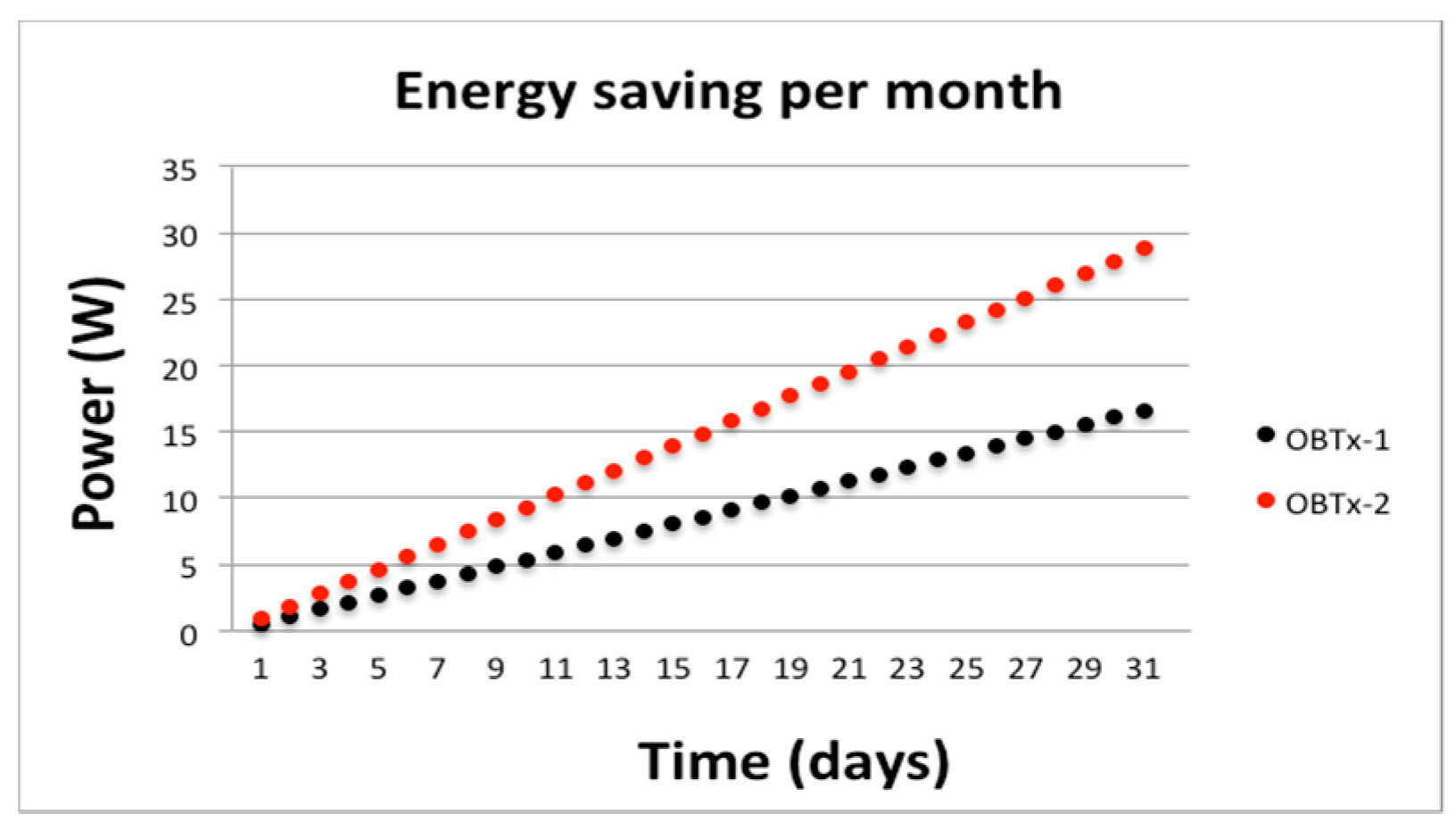
© 2019 by the authors. Licensee MDPI, Basel, Switzerland. This article is an open access article distributed under the terms and conditions of the Creative Commons Attribution (CC BY) license (http://creativecommons.org/licenses/by/4.0/).
Share and Cite
García Baquerizo, J.P.; Suárez, A.; Macias, E.; Salas, E. Hardware Mechanism for Energy Saving in WiFi Access Points. Sensors 2019, 19, 4745. https://doi.org/10.3390/s19214745
García Baquerizo JP, Suárez A, Macias E, Salas E. Hardware Mechanism for Energy Saving in WiFi Access Points. Sensors. 2019; 19(21):4745. https://doi.org/10.3390/s19214745
Chicago/Turabian StyleGarcía Baquerizo, Juan Pablo, Alvaro Suárez, Elsa Macias, and Edgar Salas. 2019. "Hardware Mechanism for Energy Saving in WiFi Access Points" Sensors 19, no. 21: 4745. https://doi.org/10.3390/s19214745
APA StyleGarcía Baquerizo, J. P., Suárez, A., Macias, E., & Salas, E. (2019). Hardware Mechanism for Energy Saving in WiFi Access Points. Sensors, 19(21), 4745. https://doi.org/10.3390/s19214745





